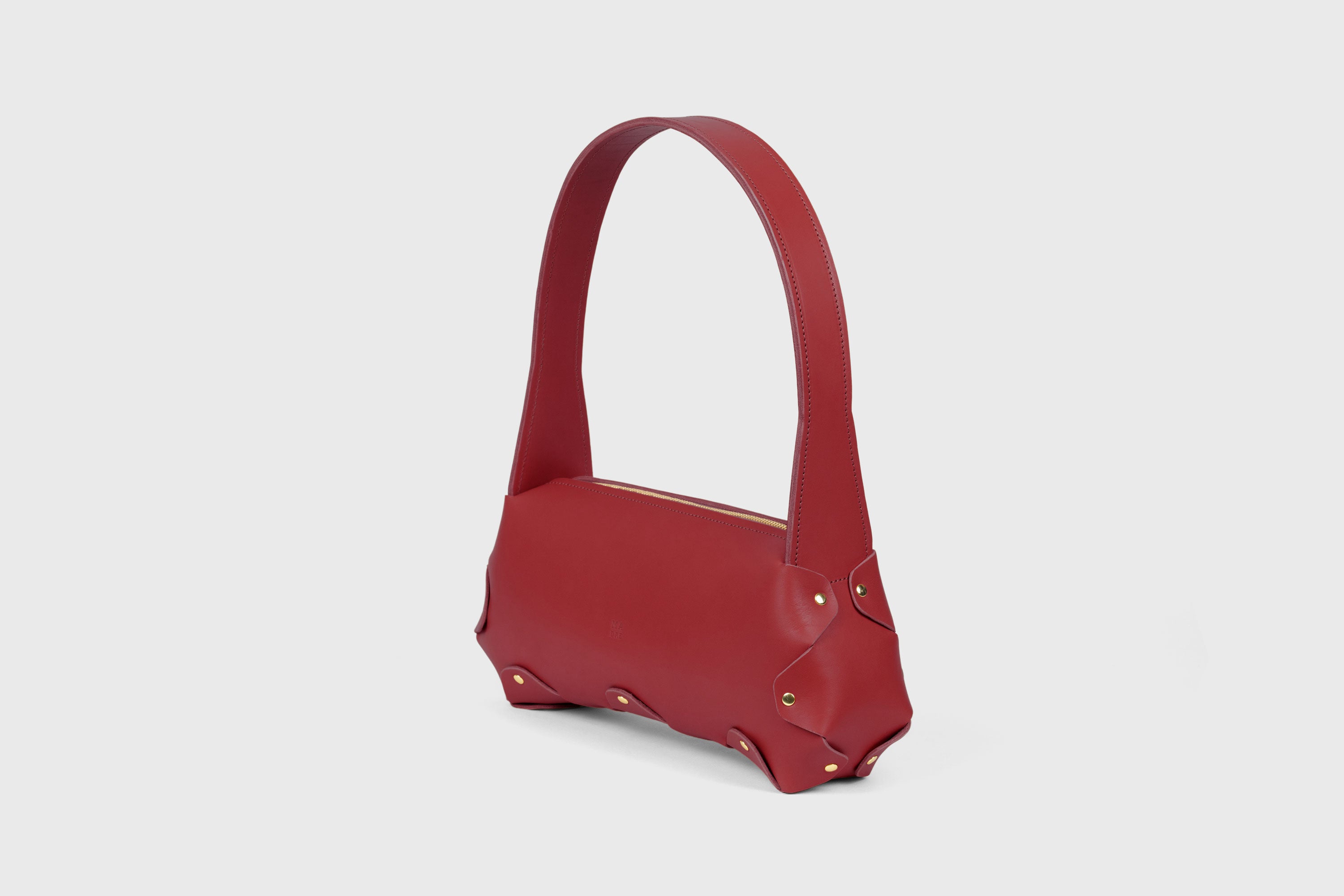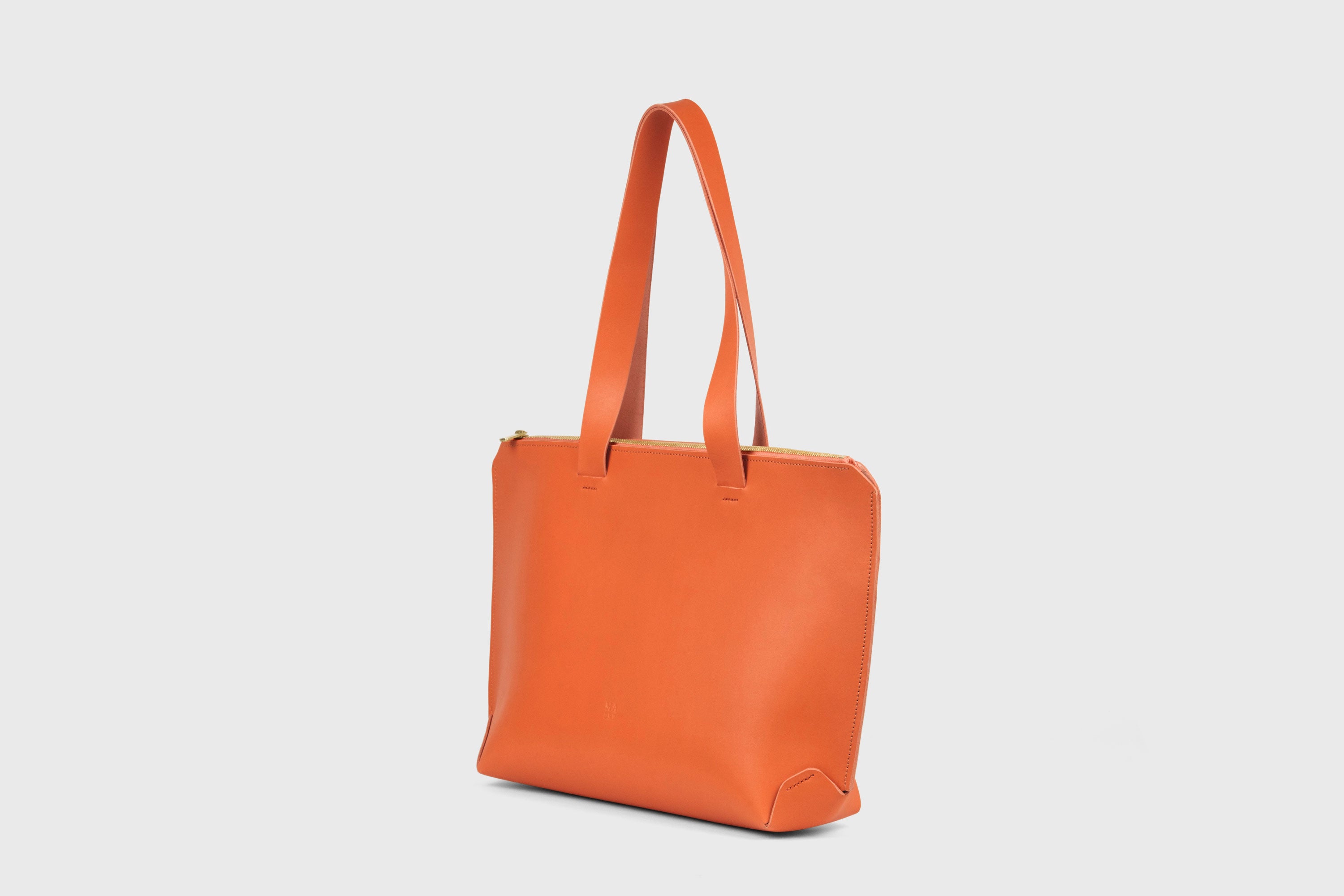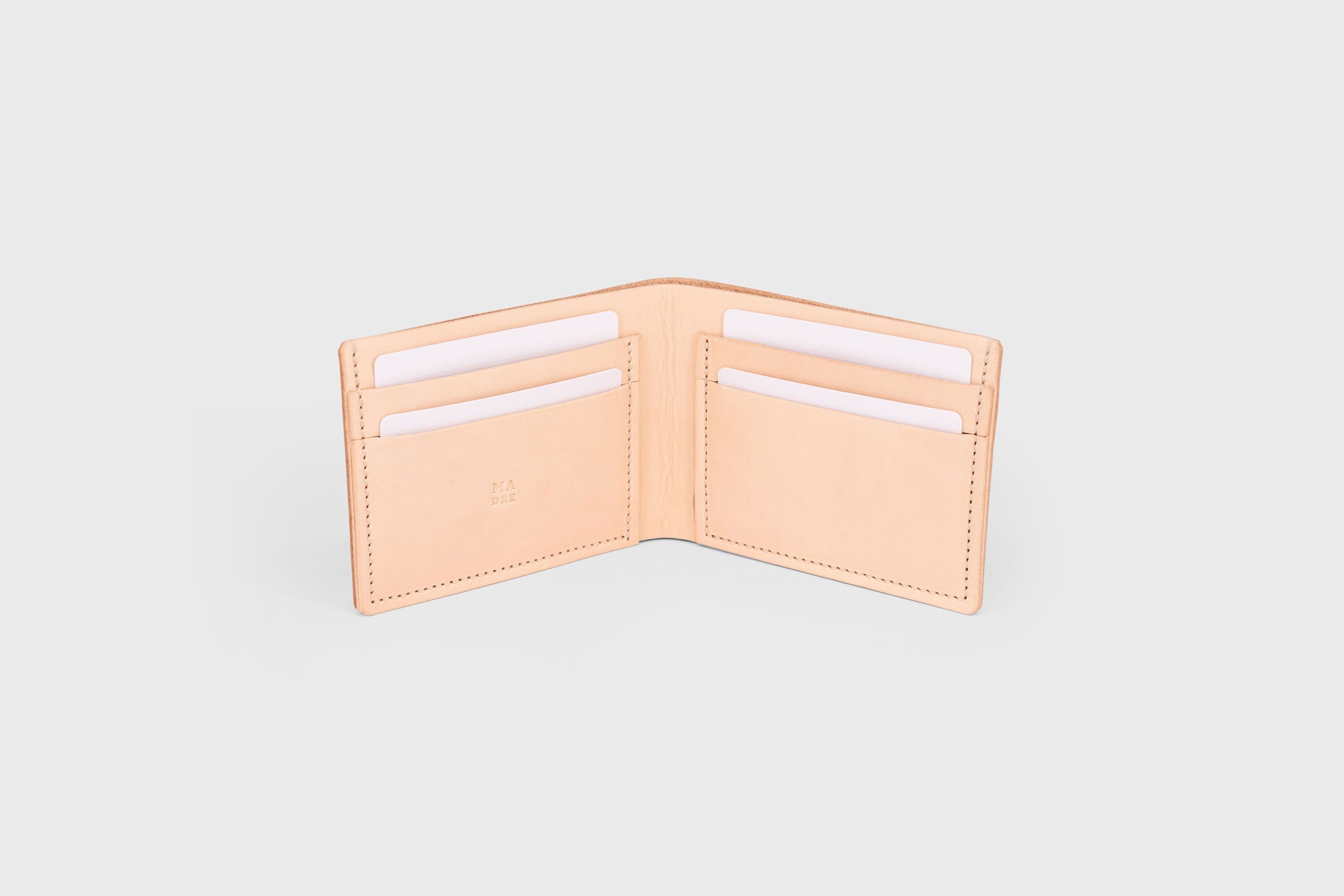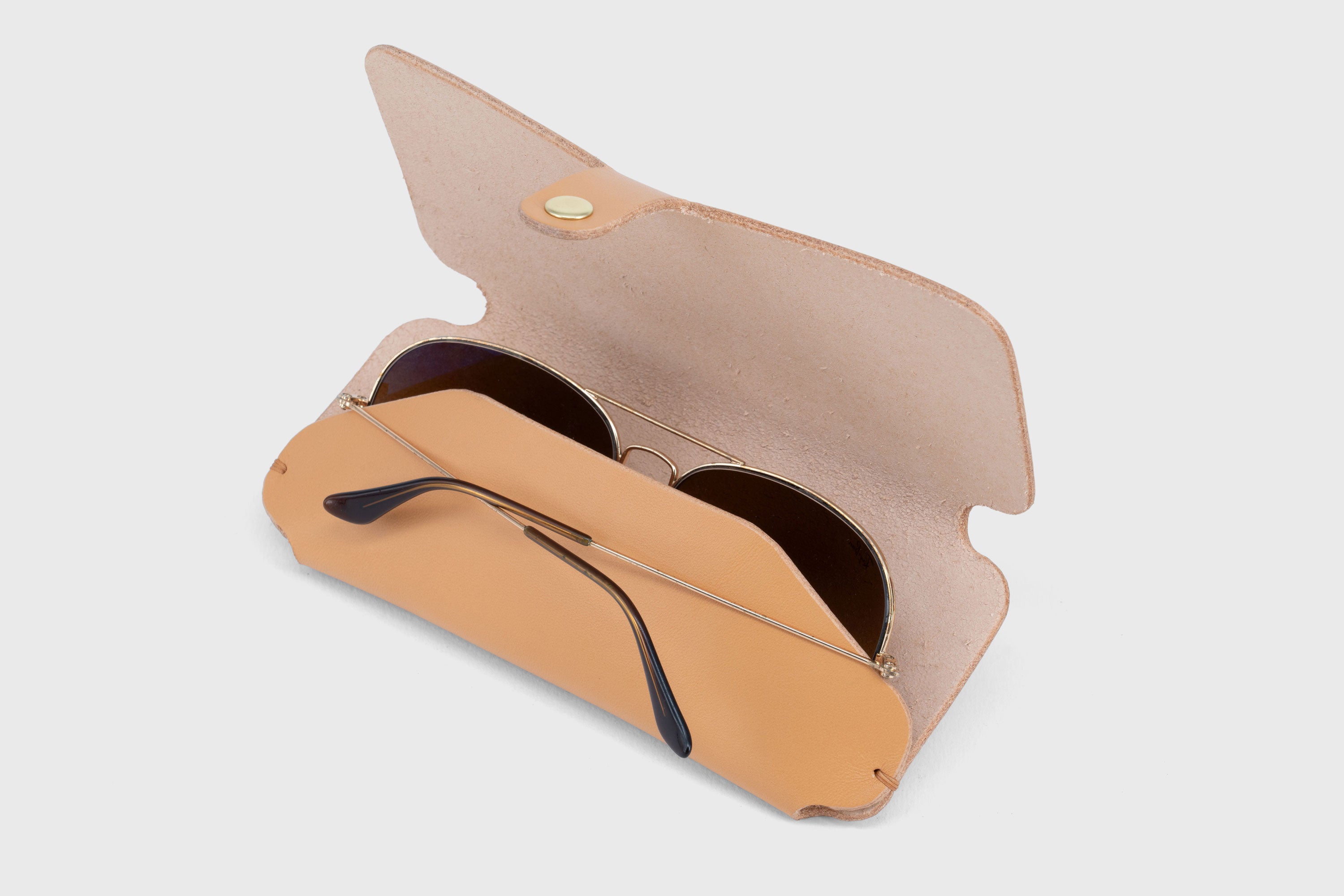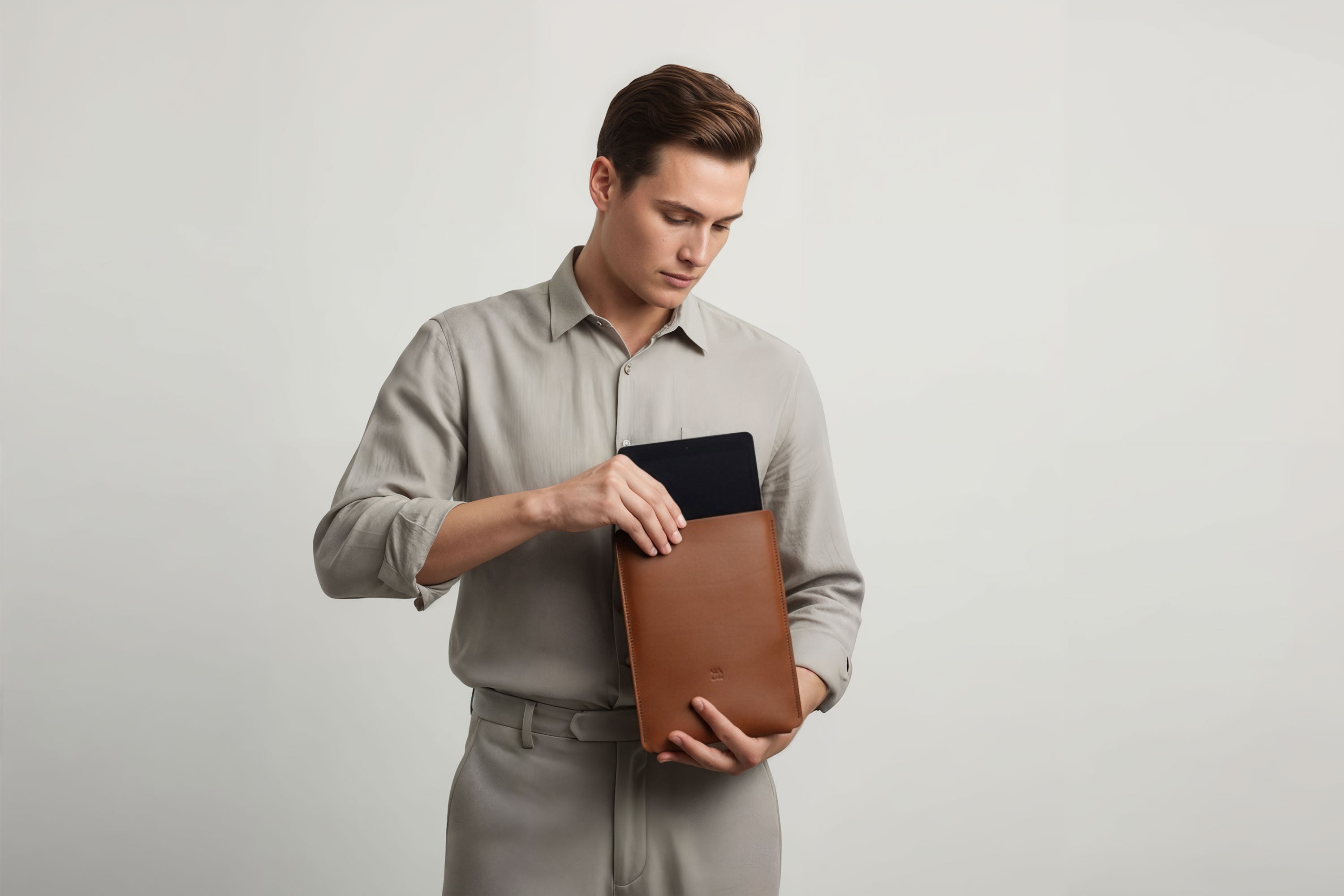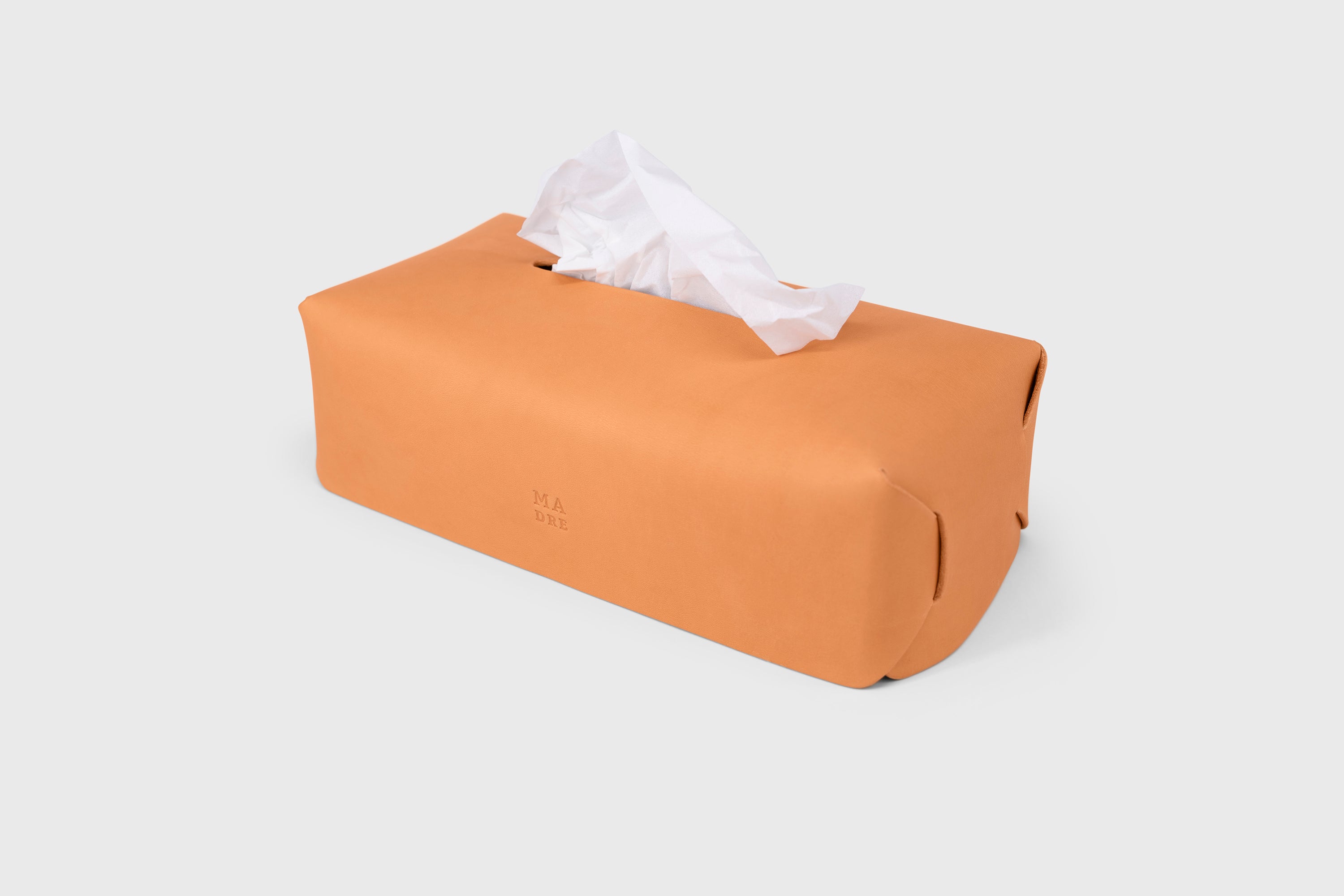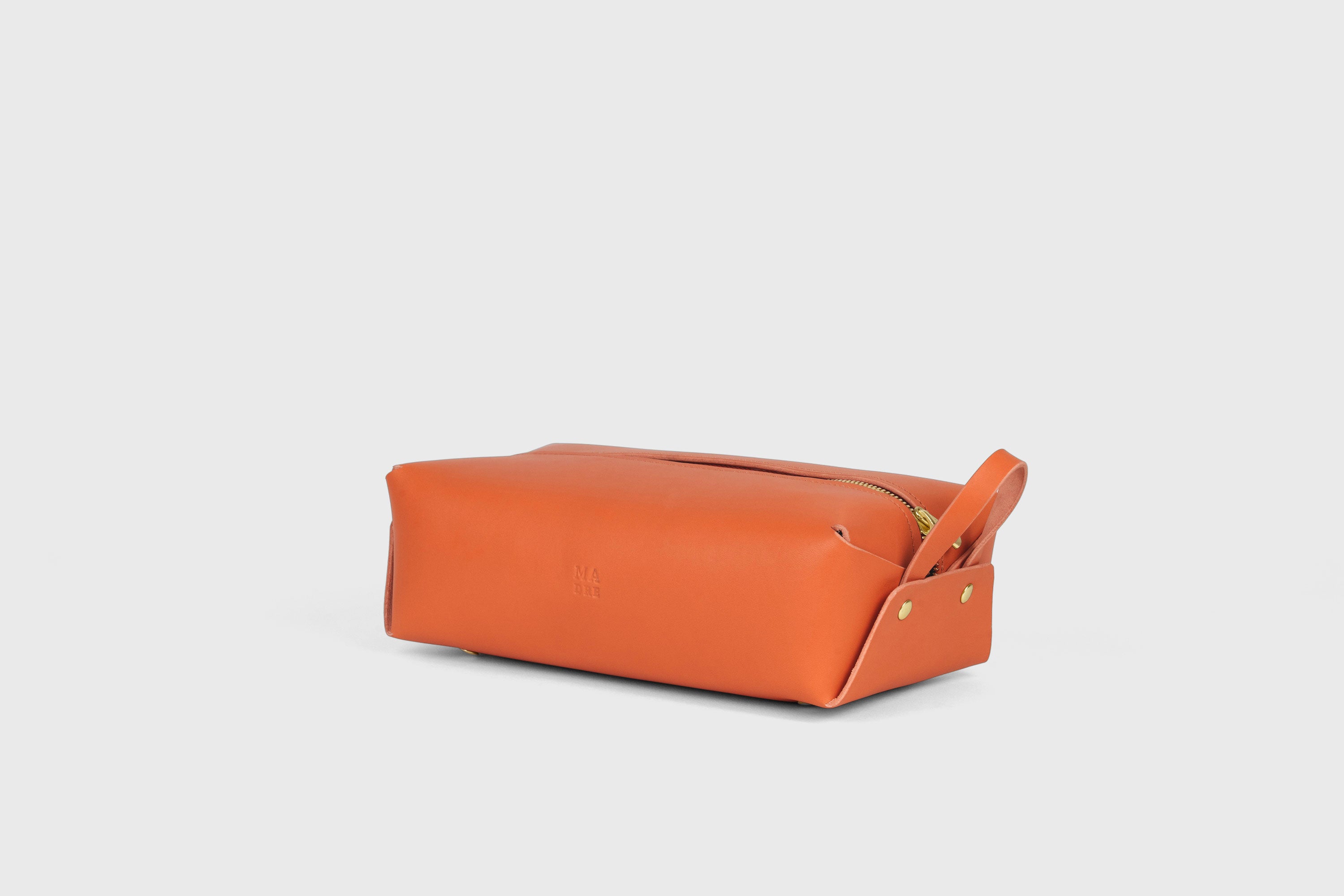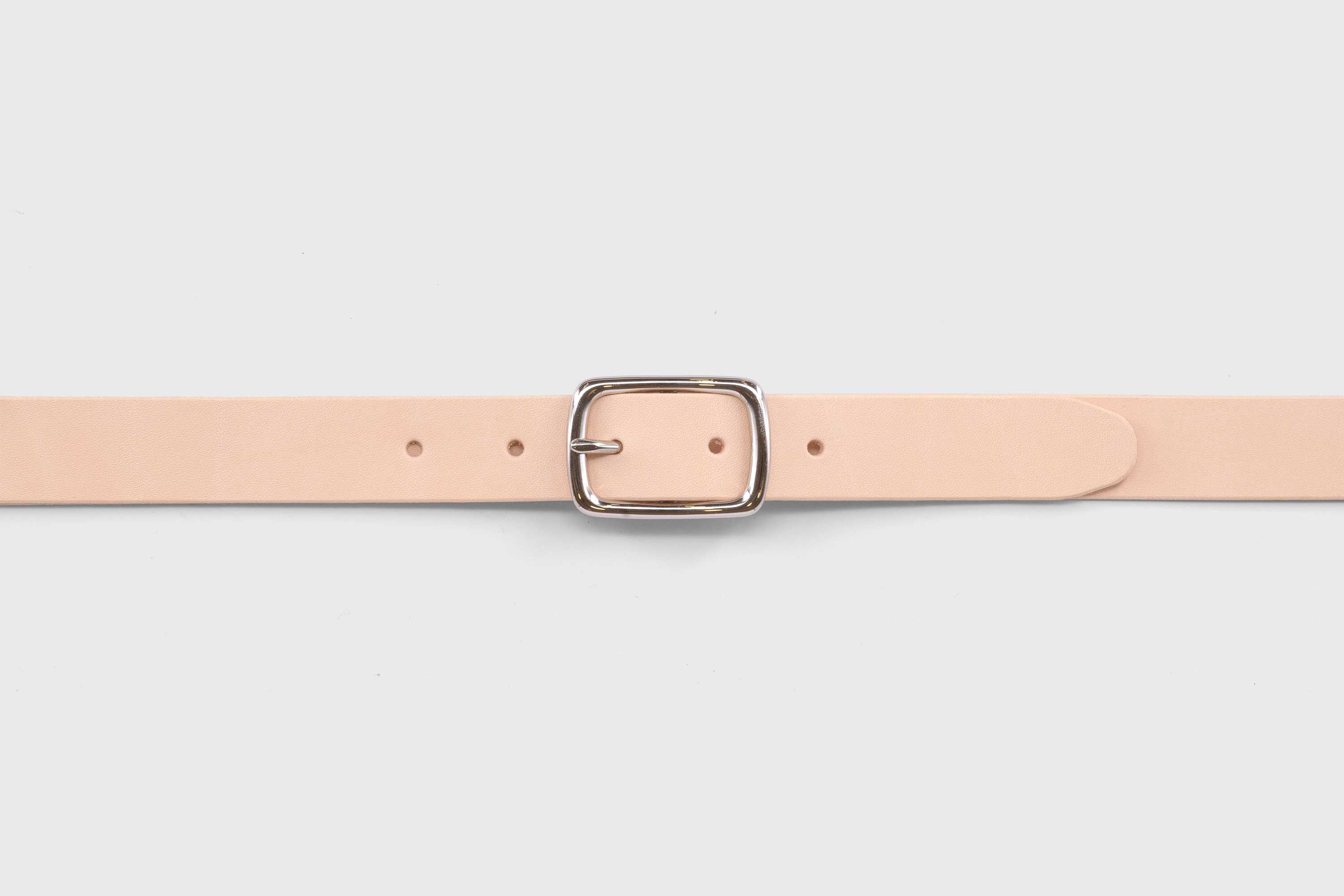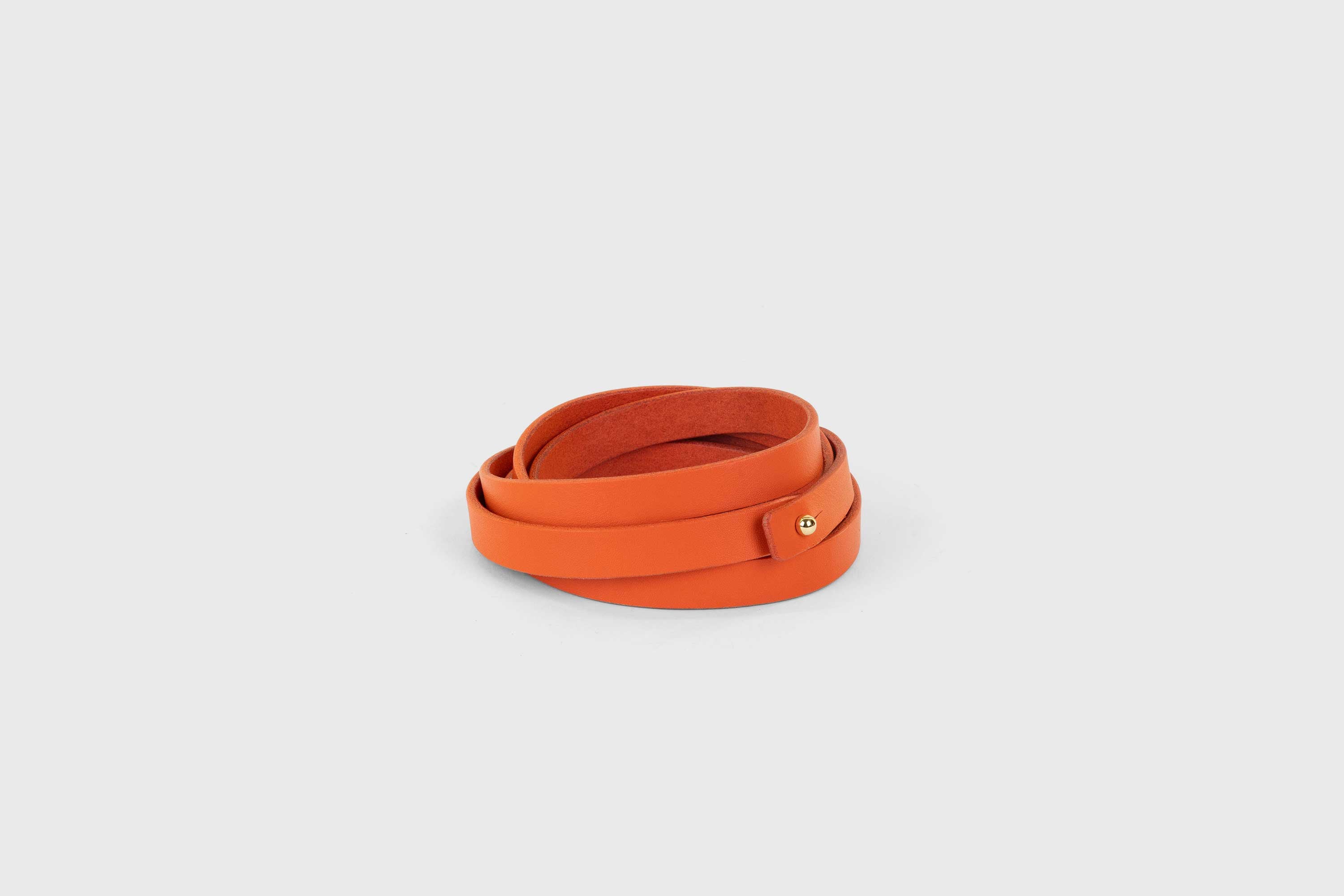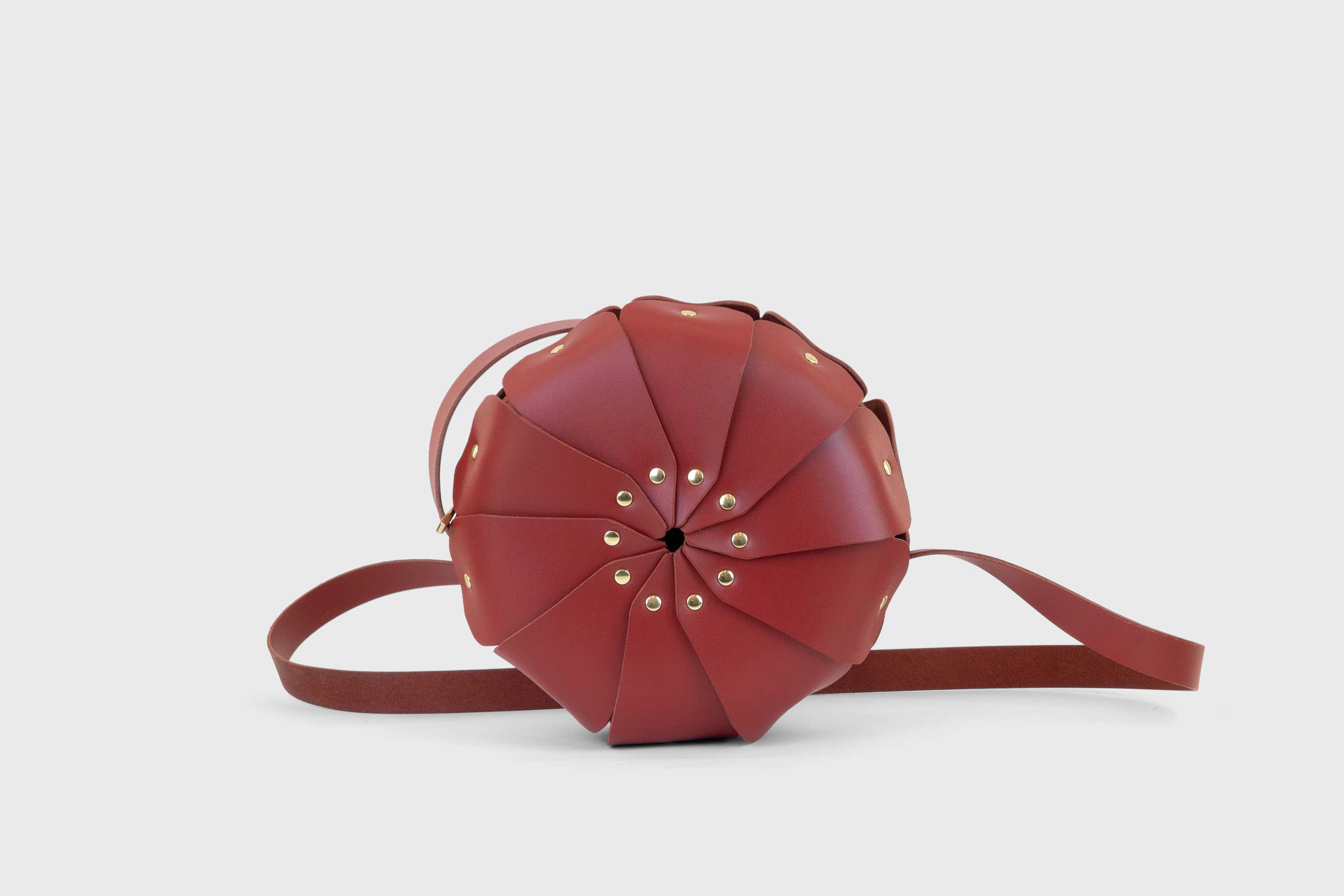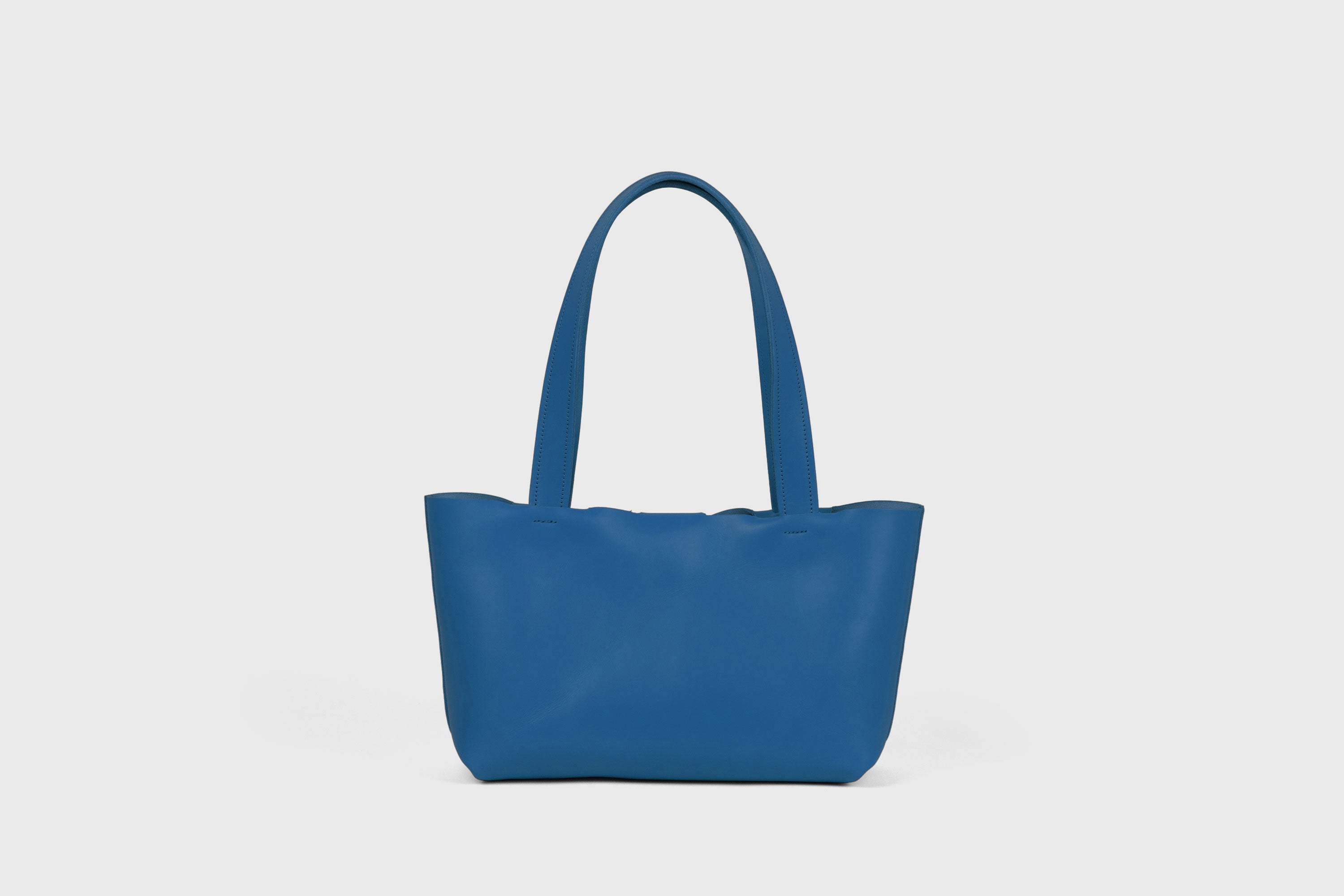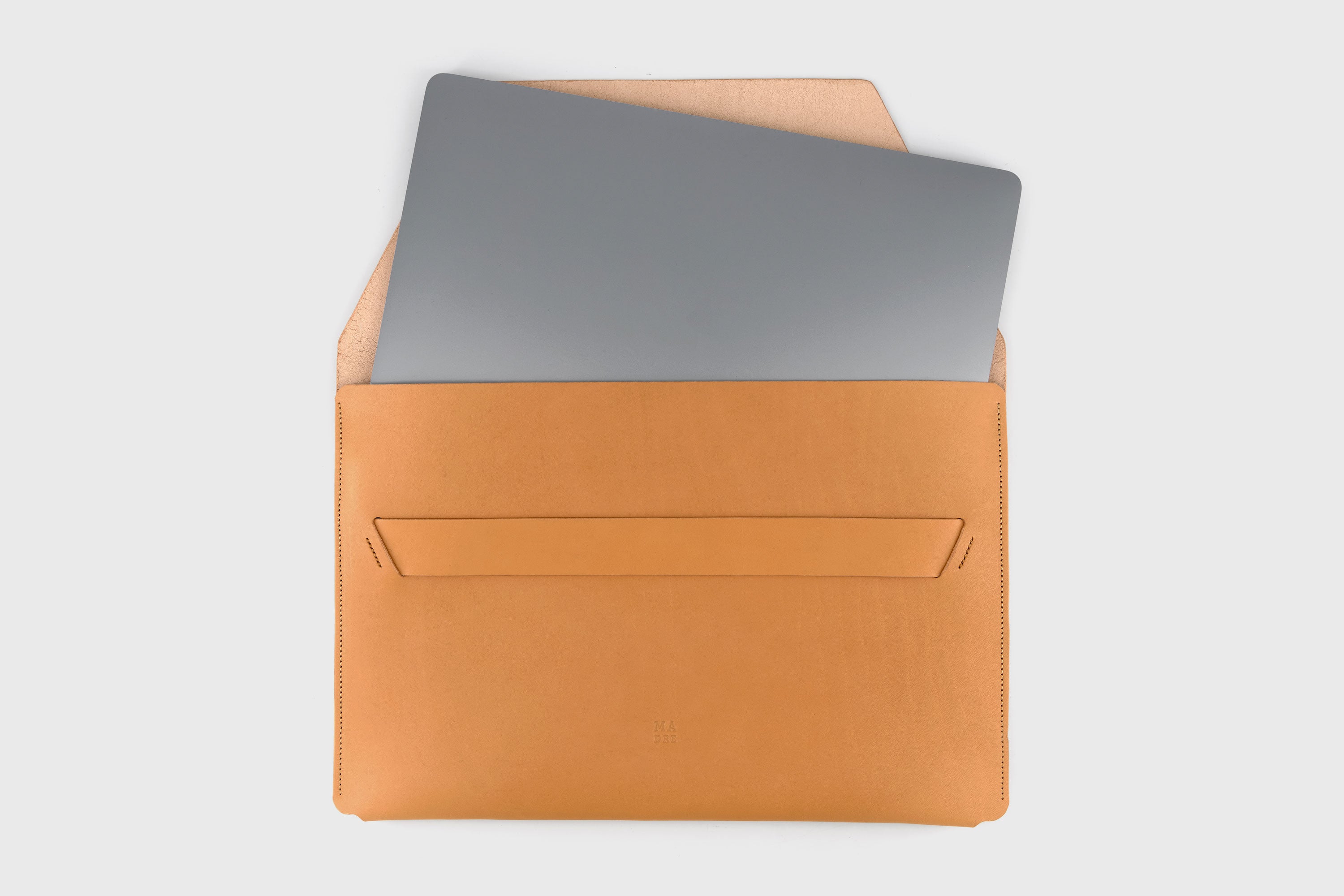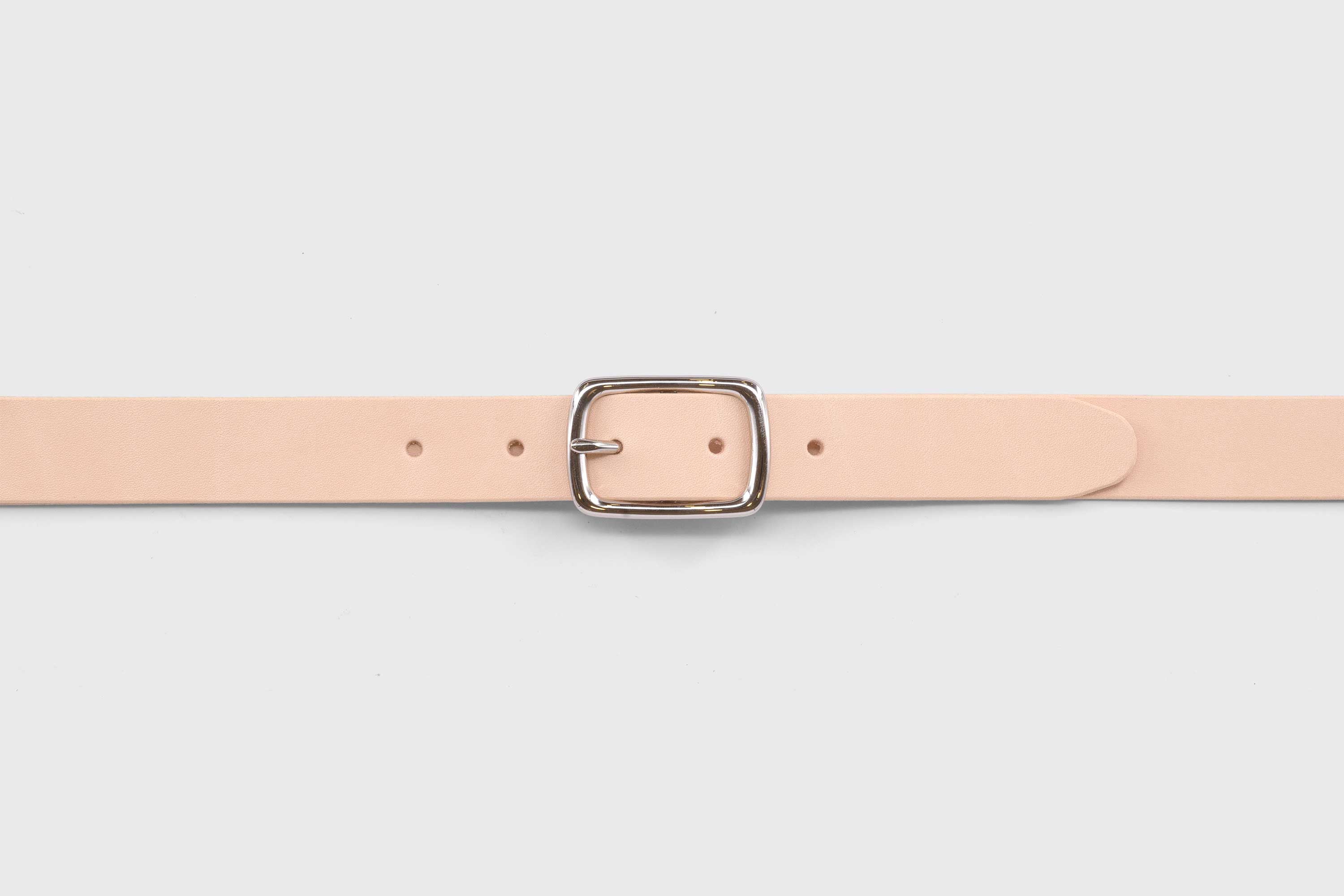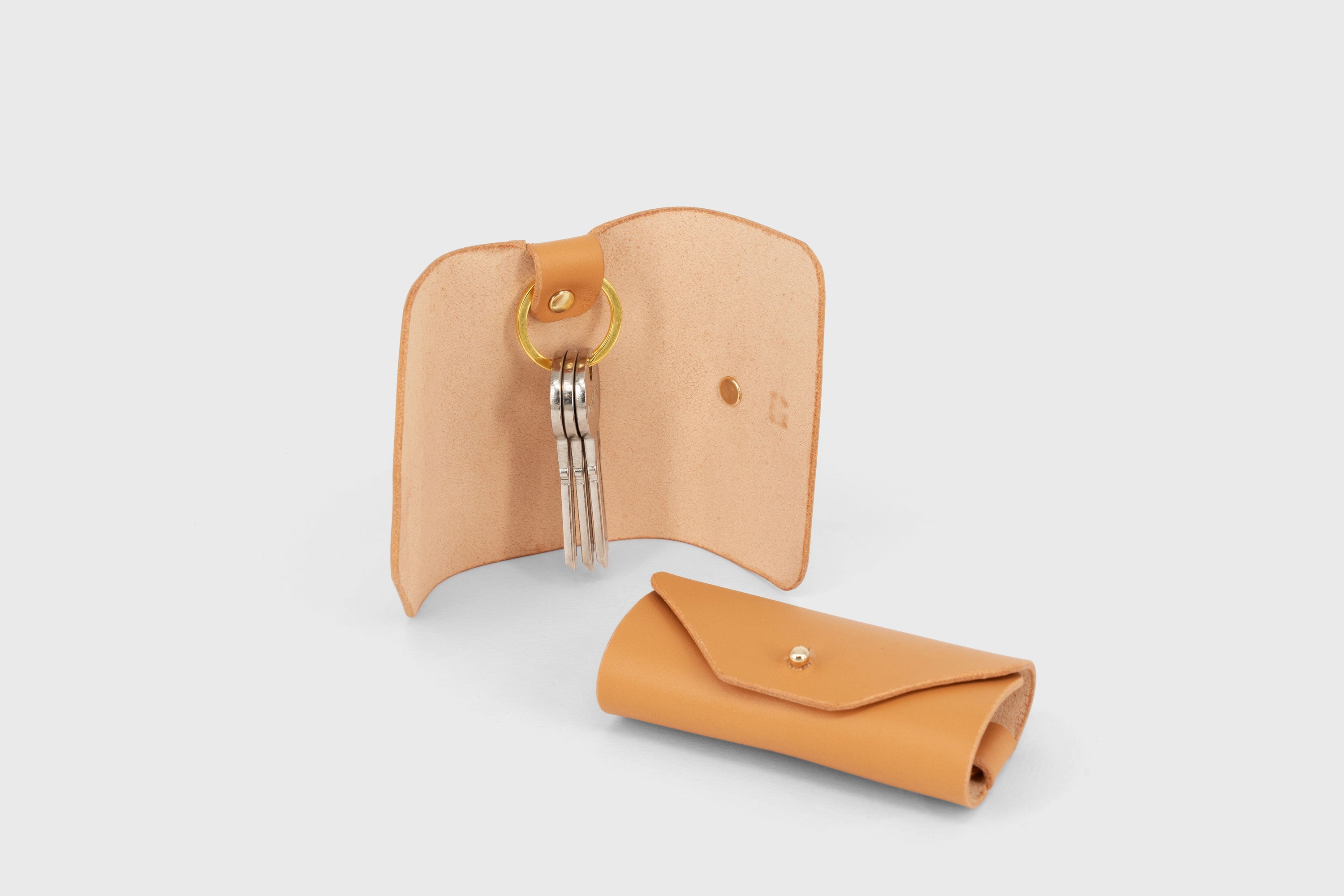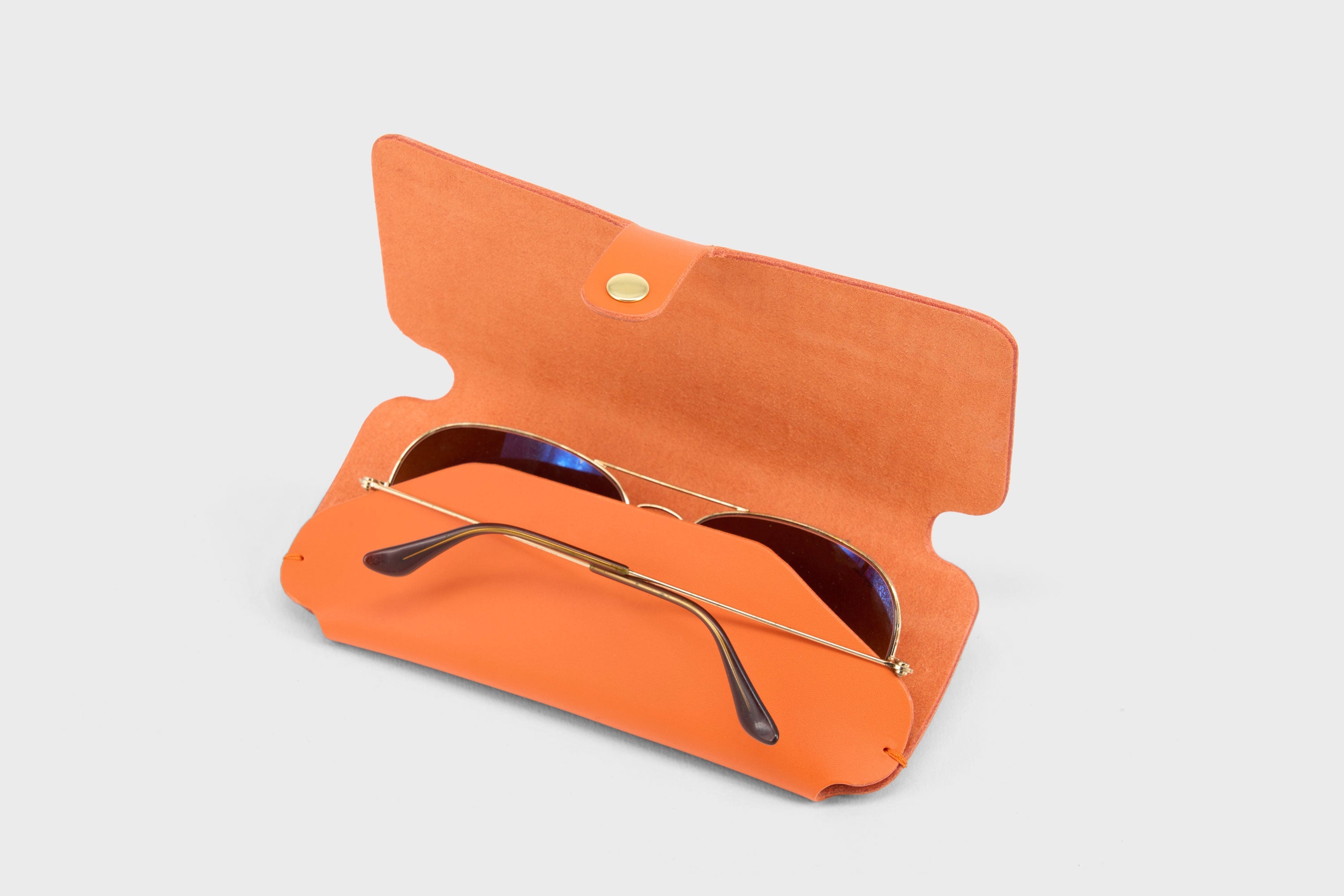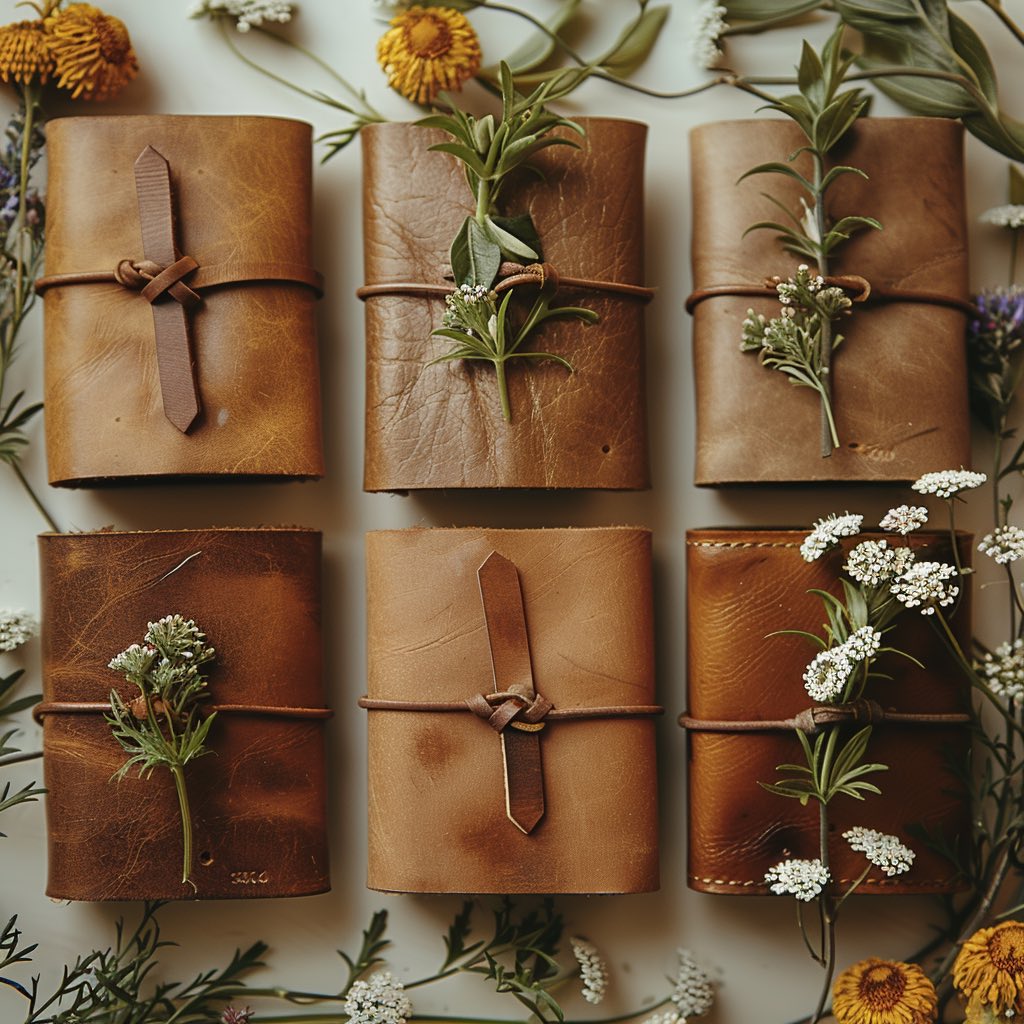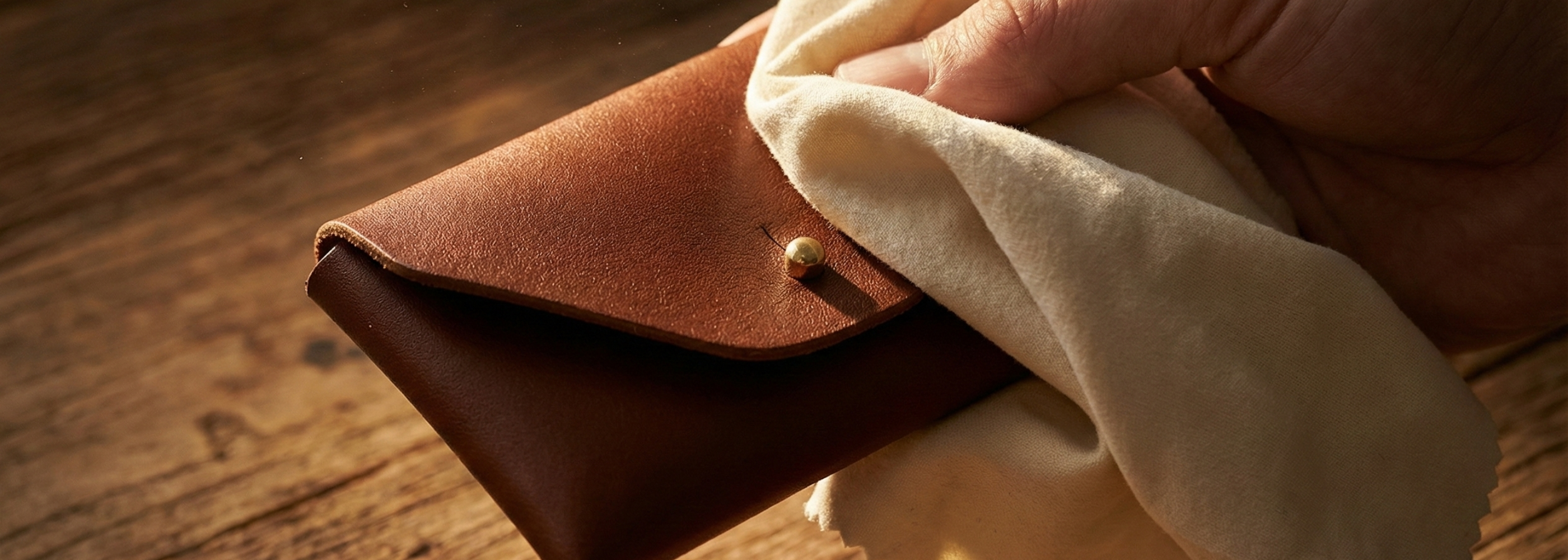
How To Clean Leather: A Comprehensive Guide To Cleaning Leather
Leather, in all its tactile glory, has stood as a symbol of luxury, resilience, and timeless style throughout history. Its buttery texture, intoxicating scent, and undeniable elegance make it a material cherished by many, from fashion aficionados to antique collectors. But beneath its seemingly sturdy surface lies a sensitivity that, if not addressed with care, can lead to premature wear and tear.
Imagine that beautiful leather handbag you invested in or the vintage leather jacket passed down through your family. These aren't just items; they're stories, emotions, and memories wrapped up in layers of tanned hide. And as with any cherished story, it's our duty to preserve it. The key? Knowing how to clean, nourish, and protect it.
This guide, curated by the experts at Atelier Madre, aims to be your go-to handbook for leather care. We've combined age-old wisdom with modern techniques, ensuring every piece of leather you own remains as captivating as the day you first held it. So, whether you're a seasoned leather enthusiast or someone who's just acquired their first leather piece, let's embark on this journey of preserving legacy, one cleaning tip at a time.
Quick Leather Cleaning Tips: Preserving Beauty in Minutes
Leather, with its timeless allure and resilience, demands a certain level of respect even when time isn't on your side. Whether you've just spilled something on your favorite leather bag or noticed a smudge on your leather shoes as you're about to step out, quick and effective cleaning measures can be lifesavers. Here are some pivotal, quick tips to ensure your leather remains impeccable, even on a tight schedule:
- Avoid Waterlogged Disasters: Remember, leather and excessive water are not friends. If you spill something, rather than soaking or submerging your leather item in water, use a soft cloth to dab and gently lift away the spill. This prevents water stains and maintains the integrity of the leather.
- Patch Test is Key: Before applying any cleaning solution, even if it's a specialized leather cleaner, always test a small, hidden segment of the leather. This ensures that the cleaner is compatible with your specific leather item and won't lead to discoloration or damage.
- Specialized Cleaners for the Win: General household cleaners might seem convenient, but they can often harm the delicate pH balance of leather, leading to drying or staining. Invest in specialized leather cleaning products. These are formulated keeping the unique nature of leather in mind, ensuring effective cleaning without the risk.
- Gentle Circular Motions: When cleaning a spot, use a soft cloth and move in gentle, circular motions. This helps in evenly distributing the cleaning product and prevents the risk of creating more prominent marks.
- Quick Drying: If your leather gets wet or after cleaning, let it air dry naturally. Avoid using direct heat sources like hair dryers as they can cause the leather to become overly dry and prone to cracks.
- Stay Prepared: Since emergencies don't announce their arrival, it's always good to have a basic leather cleaning kit on hand. This ensures you can attend to any accidental spills or stains immediately, minimizing potential damage.
In essence, while leather is robust and durable, it also requires a gentle touch, especially when you're pressed for time. These quick tips serve as a foundation for maintaining the elegance of your leather items even during those unexpected moments.
Understanding Leather Types: The Starting Point to Proper Cleaning

Before diving into the cleaning techniques, it's paramount to understand the type of leather you're working with. Different leathers have unique characteristics, which require specific cleaning approaches. Here's a brief rundown of the most common leather types:
- Full Grain Leather: Recognized for its superior quality and durability, full grain leather retains the entire grain layer, ensuring the natural imperfections of the hide remain visible. This type of leather tends to develop a beautiful patina over time, adding to its charm. However, it's also more susceptible to stains, which necessitates gentle cleaning.
- Top Grain Leather: A step below full grain, top grain leather has its surface slightly sanded to remove imperfections. It's more resistant to stains than full grain but may not develop the same rich patina over time.
- Split Grain Leather: This leather comes from the lower layers of the hide, split away from the top grain layer. It's typically used for suede and doesn't have the natural grain pattern. Given its texture, it can be more prone to soaking up liquid stains.
- Nubuck: A type of top grain leather sanded on the outer surface to give it a slight nap of short protein fibers, resulting in a velvety surface. Its plush texture demands a unique cleaning approach.
- Patent Leather: This leather type is known for its glossy and shiny finish. It’s treated with oils, waxes, or resins to achieve its signature sheen.
- Bonded Leather: A mix of leather fibers and synthetic materials, bonded leather might not offer the same luxurious feel as full or top-grain leather, but it does present its own cleaning challenges.
Now, why is understanding these types crucial? Each leather type reacts differently to water, cleaning agents, and conditioners. For instance, full-grain leather benefits from deep moisturization after cleaning, while patent leather requires a gentle wipe with a damp cloth to retain its shine.
Armed with knowledge about your leather type, you can now venture into the world of leather cleaning with more confidence, ensuring the longevity and pristine condition of your cherished items.
Essential Leather Cleaning Tools and Solutions: Preparing for the Task
Once you're familiar with the type of leather in your possession, the next step is to gather the necessary cleaning tools and solutions. Here’s a comprehensive list of what you might need:
- Soft Cleaning Cloths: Always opt for soft, lint-free cloths when cleaning leather. They're gentle on the material, ensuring that the leather’s surface doesn't get scratched or damaged.
- Soft-Bristled Brushes: Especially useful for textured leathers like nubuck or suede, these brushes can help lift dirt from the leather's nap without causing harm.
- Mild Soap or Leather Cleaner: Always use a cleaner specifically formulated for leather or a mild, non-alkaline soap. Traditional detergents or alkaline soaps can damage leather by stripping its natural oils.
- Leather Conditioner: After cleaning, leather often requires moisturization to restore its softness and sheen. Leather conditioners or creams hydrate the material and can protect it from future damage.
- Water: Always use distilled or cold tap water. Avoid using hot water as it can cause the leather to dry out or shrink.
- Vacuum (with brush attachment): For larger leather items like sofas or jackets, using a vacuum with a brush attachment can be effective in removing surface dirt before you begin the cleaning process.
- Leather Protectant Spray: Once your leather is clean and conditioned, it's wise to apply a protectant spray, especially for items frequently exposed to the elements, like shoes or jackets. This spray forms a barrier against moisture and dirt.
- Eraser: Handy for nubuck or suede, an eraser can gently remove superficial stains or marks.
- Cornstarch or Talcum Powder: Effective for oil or grease stains on leather. Sprinkling a bit of either on the stain and letting it sit can help draw out the grease.
Important Tip: No matter which cleaning solution you decide to use, always conduct a patch test on an inconspicuous area of the leather item. This ensures the solution won’t cause discoloration or damage.
In conclusion, having the right tools on hand not only simplifies the cleaning process but also ensures the longevity and durability of your leather items. With proper care, leather can last a lifetime, reflecting stories of its adventures and the care you've bestowed upon it.
Basic Cleaning Techniques for Different Leather Types
Each type of leather comes with its own unique set of characteristics. These attributes not only determine the leather's appearance and feel but also dictate the best methods for its care. Let's delve into the basic cleaning techniques suitable for various leather types:
-
Smooth Finished Leather (Full Grain, Top Grain):
- Dust Removal: Start by wiping the leather with a soft, dry cloth to remove any dust or debris.
- Cleaning: Dampen another cloth with water and a small amount of mild soap or leather cleaner. Gently wipe the surface of the leather in a circular motion.
- Drying: Always allow the leather to air-dry naturally. Avoid direct sunlight or heat sources, as they can cause the leather to fade or become brittle.
-
Nubuck and Suede:
- Dust Removal: Use a soft-bristled brush to gently brush away any surface dirt or dust.
- Spot Cleaning: For superficial marks or stains, a leather eraser can be effective. For deeper stains, a specially formulated nubuck or suede cleaner can be used. Remember to brush the leather's nap in a single direction after cleaning.
- Protection: Due to their porous nature, nubuck and suede can benefit from regular application of a water-resistant spray.
-
Patent Leather:
- Dust Removal: Wipe with a soft, dry cloth.
- Cleaning: A mixture of water and a tiny amount of mild soap can be used to clean the surface. Wipe away any soap residue with a clean, damp cloth.
- Shine Restoration: A window cleaner can be sprayed onto a cloth and used to restore the shiny finish of patent leather.
-
Aniline and Semi-Aniline Leather:
- Dust Removal: A gentle wipe-down with a soft cloth will do.
- Cleaning: Use a damp cloth with a mild, non-alkaline soap. These leathers often have a more natural finish, so it's crucial to avoid harsh chemicals that might disrupt the leather's appearance.
Note: The golden rule across all leather types is to avoid using too much water or any harsh chemicals. Over-saturation can warp leather, and strong solvents can strip the leather of its natural oils, leading to dryness and cracking.
To keep your leather items looking their best, it's advisable to clean them regularly, especially if they're used daily. With the right techniques tailored to the specific leather type, your items will maintain their beauty and integrity for years to come.
Addressing Stains and Spills on Leather
Every leather enthusiast's nightmare is an accidental spill or stain on their treasured leather item. However, knowing how to address such mishaps can save the day. Here's a comprehensive guide on managing various spills and stains:
-
Liquid Spills:
- Act quickly! Blot the spill gently using a clean, dry cloth or paper towel. Do not rub, as this can spread the liquid and push it further into the leather.
- Let the leather air dry naturally. Avoid using hairdryers or placing it near heaters, as this can cause the leather to dry out or warp.
-
Ink Stains:
- For fresh ink stains, immediately dab with a dry cloth to absorb as much ink as possible.
- Use a small amount of rubbing alcohol on a cotton swab to gently lift the ink. Test on an inconspicuous area first to ensure it doesn't discolor the leather.
-
Grease Stains:
- Do not use water. Instead, blot away the grease using a dry cloth.
- Sprinkle a small amount of talcum powder or cornstarch on the stain and let it sit for a few hours. The powder should absorb the grease. Brush off gently after.
-
Mold and Mildew:
- For leather items that have been stored in a damp environment, a mildew/mold cleaning might be necessary. Wipe the surface with a soft cloth dipped in a solution of equal parts water and alcohol.
-
Salt Stains (from winter roads or sweat):
- Mix equal parts of white vinegar and water. Dampen a cloth with the solution and gently wipe off the salt stains. Allow the leather to dry naturally.
-
Scuffs and Scratches:
- For minor scuffs, a quick rub with your fingers can sometimes do the trick. The natural oils from your skin can help reduce the appearance of scuffs.
- For deeper scratches, consider applying a leather conditioner or cream. These products can help blend the scratch into the surrounding leather.
Cautionary Tip: Always do a spot test with any cleaning solution or method on a hidden area of the leather item. This will help you ensure that there's no discoloration or adverse reaction.
Remember, leather is a resilient material, but it also requires gentle care. Addressing stains and spills promptly and correctly can ensure your leather items remain pristine and elegant for the long haul.
Removing Ink Stains from Leather: A Comprehensive Guide to Restoring Your Item's Splendor
Ink stains on leather can be a heart-dropping sight for many. Whether it's an accidental pen mark on your cherished leather bag or an ink blot on your sofa, it's essential to approach the situation with caution. Leather, being a unique and porous material, can react adversely if the ink isn’t removed correctly. Here's your guide to doing it right:
- Act Quickly: The faster you address an ink stain, the higher the chances of completely removing it. Fresh ink is easier to lift than ink that has set in.
- Blot, Don't Rub: Use a clean, white cloth to gently blot the ink stain. Rubbing can push the ink deeper into the leather, making it more challenging to remove.
- Use Isopropyl Alcohol: Dab a cotton swab in isopropyl alcohol and gently apply it onto the stain, working from the outside in to prevent spreading. This can lift many ink stains. However, always test a small, inconspicuous area first to ensure the alcohol doesn't discolor the leather.
- Commercial Leather Cleaners: There are specific leather cleaners available that can effectively treat ink stains. Always read the label and follow the instructions.
- Baby Wipes: An unconventional method, but sometimes effective. Gently use a baby wipe to dab the stain. It can lift mild ink marks, especially from finished leather.
- Avoid Using Harsh Chemicals: Products like bleach or nail polish remover may seem effective, but they can damage the leather, leading to discoloration and dryness.
- Condition After Cleaning: Once you've treated the ink stain, it's essential to condition the leather. Cleaning can strip the leather of its natural oils, so replenishing it ensures the material remains supple and maintains its natural luster.
- When to Seek Professional Help: If the stain is large, persistent, or on a particularly valuable item, it may be wise to consult a professional leather cleaning service. They have specialized products and expertise to handle challenging stains.
Remember, the key to effective ink stain removal is acting promptly and using the right products. With a little patience and the correct techniques, your leather item can be restored to its former glory, making it look as pristine as the pieces from Atelier Madre's impeccable collection.
Efficiently Removing Grease Stains from Leather: Preserve the Beauty of Your Treasured Items
Grease stains on leather items can be particularly daunting. The oily nature of grease makes it challenging to lift, especially from leather's porous surface. However, with the right techniques and a touch of patience, even the most stubborn grease marks can become a thing of the past. Here’s your step-by-step guide:
- Immediate Action is Key: The longer a grease stain sits on leather, the deeper it can penetrate. Addressing it promptly increases the chances of full removal.
- Blot Away Excess Grease: Using a clean, absorbent cloth or paper towel, gently blot the stain to remove any excess grease. Avoid rubbing as this can push the grease deeper into the leather.
- Use Cornstarch or Talcum Powder: These are excellent absorbents for oily stains. Sprinkle a generous amount on the stain and let it sit for a few hours, preferably overnight. The powder will absorb the grease, lifting it from the leather. Gently brush away the powder with a soft brush.
- Avoid Water: Water can spread the grease and make the stain more prominent. Instead, focus on dry methods of removal.
- Leather Cleaners: Specialized leather cleaners can be effective against grease stains. Choose a cleaner suitable for your leather type, and always test on a hidden area first.
- Homemade Solution: Mix a solution of equal parts water and white vinegar. Dampen a cloth with this solution and gently dab the stain. This can help break down and lift the grease. Once done, wipe the area with a clean cloth.
- Condition After Treatment: Grease removal processes can sometimes dry out the leather. After cleaning, apply a leather conditioner to restore its suppleness and shine.
- Consult Professionals for Larger Stains: If you're dealing with a significant or old grease stain, it may be beneficial to seek the expertise of a professional leather cleaner.
Grease stains, while formidable, don't have to spell the end for your beautiful leather items. With these tips and techniques, you can ensure that your leather pieces, whether they’re from Atelier Madre’s collection or cherished heirlooms, continue to look their absolute best.
Deciphering the Ideal Frequency: How Often Should You Clean Your Leather?
Leather, an all-time favorite material for many, exudes elegance, durability, and timeless charm. But to maintain its beauty, understanding the ideal cleaning frequency is crucial. Let’s dive into the nuances of maintaining leather's pristine condition:
- Regular Dusting and Wiping: On a day-to-day basis, leather items can gather dust and minor debris. A weekly light wipe-down with a soft, dry cloth can prevent these particles from settling and scratching the surface.
- Deep Cleaning: The frequency of deep cleaning depends on the leather's usage and exposure. For items like sofas or jackets that see daily use, a deep clean every 3-6 months is recommended. In contrast, rarely used items, such as special occasion handbags or formal shoes, might only need a deep cleaning annually.
- Exposure to Elements: Leather goods regularly exposed to sunlight, moisture, or heavy wear (like frequently used handbags or daily wear shoes) should be cleaned and conditioned more frequently. Quarterly cleaning can help counteract the damaging effects of environmental exposure.
- Incidental Stains or Spills: Accidents happen! If your leather item gets stained or experiences a spill, address it immediately, irrespective of your cleaning schedule.
- Conditioning: Apart from cleaning, leather needs conditioning to maintain its moisture and suppleness. Depending on the item's use and the environment, conditioning every 6-12 months can keep the leather vibrant and prevent it from becoming brittle.
- Consult Manufacturer’s Recommendations: Brands, especially those as dedicated to quality as Atelier Madre, often provide guidelines for product care. Always check any care instructions provided when you purchase a leather item.
- Adapt as Needed: Over time, you'll become familiar with your leather item's specific needs. Some items may require more frequent attention, while others can go longer between cleanings. Use your best judgment and adjust your cleaning frequency as needed.
In essence, maintaining leather's beauty and integrity is a dance between regular upkeep and responding to specific incidents. With the right frequency, your leather goods can serve you with grace for decades, if not a lifetime.
Discovering the Gold Standard: What's the Best Agent to Clean Leather?
Leather, with its rich texture and undeniable resilience, requires special care. While there are myriad products and DIY solutions available, identifying the best agent to clean leather ensures your treasured possessions remain pristine and age gracefully. Let's delve into the preferred choices:
- Specialized Leather Cleaners: These are your safest bet. Manufactured specifically for leather, they gently remove dirt and stains without stripping the leather of its natural oils. Always opt for a reputable brand, and follow the instructions to the letter.
- Mild Soap Solution: If you don’t have a specialized leather cleaner on hand, a solution made from a few drops of mild, non-detergent soap and distilled water can be a temporary alternative. Wipe the leather with a cloth dampened in this solution and then with a fresh cloth soaked in clean water to rinse. Always dry leather naturally, avoiding direct heat.
- Saddle Soap: An old-school favorite, saddle soap not only cleans but also conditions leather. It’s especially suited for rugged leather items like saddles and boots, but can be too intense for delicate leather items.
- Leather Conditioning Cleaners: These are two-in-one products that clean and condition simultaneously. They're great for routine maintenance, especially when you want to save time.
- Avoiding Harmful Agents: It's just as crucial to know what not to use. Avoid alcohol, baby wipes, or any household cleaners not meant for leather. These can dry out and damage the leather irreparably.
- Always Test First: Whether you're using a store-bought product or a DIY solution, always test it on a small, inconspicuous area of the leather first. This way, you ensure it won’t cause discoloration or damage.
- Consult Expert Advice: If in doubt, especially for high-end leather items, it might be worth consulting a leather expert or specialist. They can recommend the most suitable cleaning agents for specific leather types and finishes.
In conclusion, while there are multiple agents that can clean leather, the best ones are those designed specifically for leather care. Treat your leather items as the investments they are; by using the right cleaning agents, you ensure their longevity and enduring beauty.
Going Green: Natural Methods to Clean and Revitalize Leather
In today's world, there's a growing emphasis on sustainable, natural practices. When it comes to leather care, nature provides us with several gentle and effective cleaning solutions. Adopting a natural approach not only aligns with eco-friendly principles but can also prolong the lifespan of your cherished leather pieces. Let’s delve into these green cleaning methods:
- Vinegar and Water Solution: A mixture of equal parts white vinegar and water can work wonders for leather. Gently wipe the leather with a cloth dampened in this solution. After cleaning, always rinse with a cloth moistened with clean water and let the leather air dry.
- Olive Oil and Lemon Essential Oil: A few drops of lemon essential oil mixed with olive oil can serve as a gentle leather cleaner. Apply the mixture using a soft cloth in circular motions. Not only does it clean, but the olive oil also conditions the leather, keeping it supple.
- Cornstarch for Oil Stains: If you've got an oily stain on leather, sprinkle a bit of cornstarch on it and let it sit overnight. The cornstarch absorbs the oil, making the stain easier to wipe off.
- Baking Soda for Odor Removal: If your leather item has an unpleasant odor, placing it in a bag with baking soda can help absorb and neutralize the smell. Let it sit for a day or two, then remove and air out the leather.
- Prevention is the Best Medicine: A significant part of natural leather care is about avoiding damage in the first place. Keep leather away from excessive moisture, direct sunlight, and sharp objects.
- Stay Informed and Cautious: While these natural methods can be effective, they may not be suitable for all leather types. Always conduct a patch test on a hidden section before fully committing to the method.
- Natural Conditioners: Once cleaned, consider using natural conditioners like beeswax to maintain leather's softness and shine.
Adopting natural methods for leather care aligns perfectly with sustainable living principles. It’s a nod to the idea that sometimes the best solutions are those that have been with us for ages, right in the heart of nature. So, next time you reach for a leather cleaner, consider looking in your pantry first – nature might just have the perfect solution.
Household Heroes: Everyday Items Perfect for Leather Care

When it comes to cleaning and caring for your leather treasures, you don't always need to invest in specialty products. Your home likely houses a treasure trove of items perfect for maintaining the pristine appearance of leather. However, in general, while some of these products might work in some instances, we generally strongly advice against using any of these. As they can destroy your great leather items. Here's a list of household products that could double up as leather cleaners:
- Soap and Water: Mild dish soap diluted in water is perfect for cleaning dirt and light stains. Gently scrub using a soft cloth, ensuring not to soak the leather. Wipe off with a damp cloth and dry naturally.
- White Vinegar: Known for its mild acidic nature, white vinegar can be effective in treating stubborn stains and spots. Use it diluted, wipe the area gently, and then clean it off with a damp cloth.
- Olive Oil: While it’s more commonly associated with salads and cooking, olive oil can also be a makeshift leather conditioner. A dab on a cloth, rubbed gently on leather, can rejuvenate its shine.
- Baking Soda: Especially effective for oily stains. Sprinkle a little on the stain, leave it overnight, and then dust it off. The baking soda helps to pull the oil out of the leather.
- Cornstarch: Similar to baking soda, cornstarch can be effective for treating greasy patches. Let it sit, then brush off.
- Lemon Juice and Cream of Tartar: A paste made from these two can be a good treatment for deeper, darker stains on lighter leather. However, this method should be used with caution and always tested on a discreet patch first.
- Hair Dryer: Once you've cleaned your leather, if you're in a hurry to dry it, a hair dryer on the coolest setting and held at a distance can be a savior. However, air drying is always the best.
- Baby Wipes: These can be effective for quick clean-ups due to their gentle nature. Just make sure they don't contain any harsh chemicals.
- Talcum Powder: For fresh grease stains, this can be an effective absorber. Dust it on, leave for a few hours, then brush off.
Remember, while these household solutions can be handy, they might not be suitable for all leather types. Always conduct a patch test on a hidden section to ensure compatibility. Keeping leather in its best shape often requires a combination of patience, love, and sometimes, a dash of kitchen chemistry!
Avoiding Pitfalls: What Not to Use When Cleaning Leather
Leather, with its rich and refined appeal, demands specific care to maintain its allure. Just as there are numerous recommended methods and products to clean leather, there are a handful of substances and techniques you should absolutely steer clear of. Using the wrong products can lead to irreversible damage, fading, or even cracking. Here's a list of what you should NOT use when cleaning leather:
- Bleach or Ammonia-based Cleaners: These can severely damage leather, causing it to dry out and become brittle. They can also lead to discoloration.
- Alcohol-based Products: Unless specifically mentioned (like for ink stain removal), avoid products with high alcohol content, as they can strip the leather of its natural oils.
- Baby Wipes or Sanitizing Wipes: While they seem gentle, many contain chemicals and substances that can break down leather finishes.
- Excessive Water: Leather doesn't love water. When cleaning, it's best to use a damp cloth rather than a wet one to prevent water from soaking into the leather, which can cause spots or warping.
- Harsh Detergents or Abrasive Cleaners: These can cause discoloration and compromise the leather's integrity.
- Silicone or Petroleum-based Products: While they might add a temporary shine, in the long run, they can dry out the leather, leading to cracks.
- Rough Cloths or Sponges: Always opt for a soft cloth or sponge to avoid scratching the leather's surface.
- Direct Heat: Never attempt to speed up the drying process by placing leather near heaters or using hairdryers on high heat settings. This can cause the leather to dry out and shrink.
- Acetone or Nail Polish Remover: These can strip away the leather's finish and cause discoloration.
- Waxes or Petroleum Jelly: While they might give a glossy finish, they can also change the leather's color and texture.
Understanding what not to use is just as crucial as knowing the right products for leather care. When in doubt, always opt for specialized leather cleaning products, or consult with professionals like us at Atelier Madre, where the longevity and beauty of leather are our utmost priority.
Diving Deep: Can Leather Truly Be Washed?
Leather, with its supple texture and robust durability, often leaves many wondering about its maintenance quirks, particularly whether it can withstand a good washing. Here's what you need to know about washing leather and the precautions you should take.
-
Hand-Washing Leather:
Yes, certain leather items can be hand-washed, but it requires immense care. If you're considering this method, use cold water, a mild detergent or leather shampoo, and gently wash the item without submerging it completely. Avoid wringing or twisting as this can misshape the leather. -
Machine Washing Leather:
While it might sound like a convenient option, machine washing leather isn't recommended for most items. The agitation, spin, and detergents can be too harsh on leather, leading to shrinkage, warping, and discoloration. -
Water Exposure Risks:
Water can be a foe to leather if not approached correctly. Over-wetting can stiffen leather, causing it to lose its natural oils and become brittle once dried. It's also prone to warping if not dried properly. -
Drying After Washing:
Should you choose to wash your leather item, always air dry it away from direct sunlight or heat sources. Using heaters or hair dryers can cause the leather to shrink or become overly dry. -
Washing Leather Apparel:
Certain leather apparel, such as jackets or pants, may come with care labels suggesting they can be washed. In such cases, always follow the manufacturer's instructions to the letter. -
Alternative Cleaning Methods:
Instead of washing, consider spot cleaning your leather with a damp cloth and a mild leather cleaner. It's less risky and can address specific problem areas without exposing the entire item to potential water damage. -
Consult a Professional:
If in doubt, always consult a professional leather cleaner. They possess the expertise and equipment to clean leather without causing damage.
In conclusion, while leather can technically be washed, it's a procedure laden with potential pitfalls. To maintain the integrity and longevity of your leather items, it's best to approach washing with caution and knowledge. After all, leather isn't just a material; it's an investment in timeless style.
Conditioning and Protecting: Beyond Cleaning
Cleaning leather is only half the battle; maintaining its natural lustre, suppleness, and durability calls for post-cleaning care. The secret? Conditioning and protection. Let’s dive into the world of leather aftercare, exploring the wonders of conditioners and protective measures.
-
The Essence of Leather Conditioning:
- Leather, like our skin, can become dry, especially after a thorough cleaning, which might strip it of its natural oils. Conditioners reintroduce these essential oils, keeping leather pliant and preventing it from becoming brittle or developing cracks.
- Quality leather conditioners penetrate the leather, hydrating and replenishing it from within, resulting in a softer texture and a more vibrant appearance.
- Regular conditioning (every 3-6 months, depending on usage) can dramatically extend the life of your leather goods.
-
Choosing the Right Leather Conditioner:
- There are many leather conditioning products available, from creams to oils. The choice depends on the type of leather and personal preference.
- Cream-based conditioners often provide a more matte finish and can be ideal for items like shoes or bags that see daily wear.
- Oils, such as mink oil or neatsfoot oil, might give a richer shine, suitable for dress shoes or luxury items. However, they can darken some types of leather, so always do a spot test first.
-
Protecting Your Leather:
- After conditioning, the next step is to protect leather from future stains, spills, and sun damage.
- Consider using a leather protector spray, especially for items frequently exposed to potential spills or stains. These sprays create a protective barrier on the leather's surface, making it easier to wipe away spills before they set.
- For bags and accessories, consider using pouches or dust bags for storage. This shields them from dust and prevents accidental scratches.
- Be mindful of sun exposure. Leather can fade or become discolored when left in direct sunlight for extended periods. Store leather items away from direct sunlight whenever possible.
-
A Word on Frequency:
- It's not necessary to condition leather after every cleaning session. Over-conditioning can make leather overly soft, affecting its shape, especially in bags or structured items. Find a balance that maintains the item's appearance and integrity.
In essence, leather is more than just a material; it's an investment. With regular cleaning paired with thoughtful conditioning and protection, your leather goods will not only last but also age gracefully, telling a story of care and cherished moments over time.
Storage and Regular Maintenance: Ensuring Longevity for Your Leather Goods
While immediate care and cleaning are crucial for leather, the way you store and routinely maintain your leather items plays an equally significant role in their longevity and appearance. Proper storage can mean the difference between a leather product that wears out prematurely and one that stands the test of time. Let’s explore the best practices to store and maintain your leather treasures.
-
Avoiding Unwanted Creases:
- Always store leather items in their natural shape. For bags, this might mean stuffing them with bubble wrap, acid-free tissue paper, or old t-shirts to keep their form.
- Shoes should be stored with shoe trees or filled with tissue to prevent them from collapsing and forming creases.
- For jackets, use wide, padded hangers that support the shoulders and help maintain the garment's shape.
-
Guarding Against Color Fading:
- Leather is susceptible to UV damage. When not in use, keep leather items away from direct sunlight to avoid fading or discoloration.
- Rotate the items you use if you have multiple leather bags or shoes. This rotation ensures that no single item gets overexposed to sunlight or wear.
-
Ensuring Proper Air Circulation:
- Leather needs to breathe. Avoid storing leather items in plastic bags or bins. Instead, use cloth bags or a well-ventilated area.
- If you're keeping items in a closet, ensure there's enough space between them for air to circulate, preventing mold growth.
-
Maintaining Moisture Levels:
- Leather can either dry out or accumulate moisture, both of which are harmful. For those in particularly humid climates, consider using silica gel packs in storage areas to absorb excess moisture.
- Conversely, in dry climates, occasional conditioning can prevent the leather from drying out and cracking.
-
Regular Checks and Quick Cleans:
- Every month or so, take the time to inspect your leather items. Look for any early signs of wear or damage.
- For items used daily, a quick wipe down with a microfiber cloth can remove dust and prevent dirt buildup.
- Rotate the leather items you frequently use. This simple act can reduce wear on any particular item, ensuring all your leather goods stay in top condition longer.
By prioritizing proper storage and adopting a regimen of regular maintenance, you’re not only preserving the beauty of your leather items but also investing in their future. With these practices in place, your leather goods can remain as stunning as the day you bought them, year after year.
Spotless Comfort: How to Clean Leather Seats the Right Way
Leather seats, whether in your car or living room, offer luxury and comfort. Yet, daily use exposes them to dust, spills, and wear. Here's how to keep them looking their best:
- Vacuum First: Begin by vacuuming the seats with a soft brush attachment to remove dust and particles.
- Gentle Cleansing: Dampen a soft cloth with water and a mild leather cleaner. Wipe the seat in circular motions, avoiding soaking the leather.
- Stain Removal: For tougher stains, dab (don't rub) with a mixture of equal parts water and white vinegar or a special leather stain remover.
- Rinse: Wipe off the cleaner using another damp cloth.
- Condition: Once the seat is clean and dry, apply a leather conditioner. This keeps the leather supple and prevents cracks.
- Avoid Direct Sunlight: If possible, park your car in shade or use window shades. For home furniture, try to keep it away from continuous direct sunlight.
By following these steps, you can ensure your leather seats remain as inviting and luxurious as they were on day one.
Preserving Luxury: A Guide to Cleaning Leather Couches and Furniture
A leather couch or furniture piece can be the crowning jewel of a room, symbolizing elegance and timeless beauty. However, regular use can lead to dirt accumulation and occasional spills. Here's how you can keep your leather furniture pristine:
- Dust Regularly: Use a soft cloth or microfiber duster to wipe away surface dust every week.
- Vacuum: Use a soft brush attachment to vacuum crevices and ensure there’s no dirt or crumbs trapped.
- Spot Clean: For spills, immediately blot with a clean, dry cloth. Do not rub! For stubborn stains, use a damp cloth with a bit of mild soap, wiping in a circular motion.
- Deep Clean: Once in a while, wipe down the entire surface with a solution of equal parts water and vinegar or a dedicated leather cleaner. Always do a patch test first.
- Condition: Leather can dry out over time. To prevent this, apply a leather conditioner every 6-12 months, ensuring longevity and a soft, supple touch.
- Avoid Sunlight and Heat: Keep your leather furniture away from direct sunlight and heat sources to prevent fading and drying.
With consistent care, your leather couch or furniture piece can remain a luxurious centerpiece in your space for years to come.
Walking the Talk: Maintaining the Elegance of Leather Footwear
Leather boots, shoes, and sneakers seamlessly blend style with functionality. But, as they brave the elements and terrains, they inevitably accumulate dirt and wear. Here’s your guide to keeping your leather footwear looking freshly polished:
- Regular Dusting: Begin by brushing off loose dirt and dust using a soft-bristled brush or cloth after every wear.
- Spot Cleaning: For minor stains, use a damp cloth. For stubborn spots, a mix of mild soap and water can be effective. Always gently rub in circular motions.
- Deep Cleaning: Every once in a while, especially after a muddy day, give your leather shoes a deeper clean. Use leather cleaners available in the market, always ensuring to test on a less visible part first.
- Conditioning: Just like skin, leather needs moisturizing. Use a leather conditioner or cream to restore moisture, especially if the leather feels dry or after a deep clean.
- Storage: Store in a cool, dry place. Use shoe trees or crumpled newspaper to retain shape.
- Weatherproofing: For boots and shoes often exposed to wet conditions, consider using a waterproofing spray to add an extra layer of protection.
- Polishing: For added shine, especially for formal footwear, polish using a suitable color.
Footwear is a reflection of one's journey. With regular care, your leather shoes, boots, or sneakers can remain your stylish companions, step after step.
Elevate Elegance: Preserving the Beauty of Leather Bags and Purses
Bags and purses are not just accessories; they're statements of style and often carry personal essentials. When crafted from leather, their value and aesthetic appeal are unparalleled. Here’s how to keep these treasures looking as splendid as day one:
- Routine Wipe-down: After each use, gently wipe your leather bag with a soft, dry cloth to remove surface dirt and dust.
- Deep Cleaning: About once a month or when a spill occurs, dampen a cloth with water and a drop of mild soap. Wipe the stained area gently, then use a clean, damp cloth to wipe off the soap. Dry with a fresh cloth.
- Stay Clear of Harsh Chemicals: Products like alcohol or acetone can severely damage leather. Always opt for leather-specific cleaners.
- Conditioning: Just as with other leather items, your bags and purses need nourishment. Apply a leather conditioner every 3-6 months to maintain its softness and vibrant color.
- Storage: When not in use, store your leather bag or purse in a cool, dry place away from direct sunlight. Using dust bags can protect them from dirt and scratches.
- Avoid Overloading: Overstuffing can cause the leather to stretch, losing its original shape. Maintain the structural integrity of your bag by carrying only essentials.
- Handle with Clean Hands: It's easy to transfer dirt and oil from your hands to the leather, so ensure your hands are clean when handling your prized possession.
A well-maintained leather bag or purse stands out in a crowd. With these simple steps, your leather accessory can age gracefully, turning heads wherever you go.
Preserving Legacy: Cleaning Leather with Patina and Restoring Its Grandeur
A leather item with a patina is a testament to its history, journey, and the timeless tales it embodies. A patina, which refers to the natural darkening and shine that leather develops over time, is often a sought-after attribute by leather enthusiasts. However, there comes a point where cleaning becomes essential, even for leather that's been graced with a rich patina. Here's a guide on how to approach this:
-
Should You Clean Leather with Patina?
Absolutely! Cleaning leather, even with a patina, helps to ensure its longevity. Dirt and debris can cause microscopic damage to the leather's surface, while oils from our skin can cause uneven darkening. Regular cleaning ensures the patina develops evenly and beautifully. -
Choose a Gentle Cleaner:
For leather items with patina, always opt for a mild leather cleaner. This ensures that the natural oils of the leather remain intact, allowing the patina to shine through. -
Test a Small Area First:
Before you apply any product on the entire surface, always test it on a small, inconspicuous area. This way, you can ascertain how the cleaner will react with the patina. -
Removing the Patina:
If, for some reason, you'd like to lighten the patina (perhaps it's become too dark or uneven), it's a more complex process. While minor blemishes can be treated with a gentle leather cleaner, significant changes require professional intervention. Some may opt for a leather bleaching product, but it's a risky approach that can lead to uneven results or damage. -
Maintain the Moisture:
After cleaning, it's essential to condition the leather. Leather with patina, having been exposed to environmental factors for a longer duration, requires nourishment to maintain its suppleness. -
Embrace the Patina:
Patina is a unique feature of leather that showcases its age, adventures, and care. While cleaning is essential, it's equally important to embrace this natural evolution.
In summary, cleaning leather, even with a beautiful patina, is essential for its longevity and aesthetics. If you're unsure about the process or worried about affecting the patina, consult with professionals. At Atelier Madre, we value the individual journey of every leather piece and can provide insights on how to best care for these treasures.
Why Atelier Madre Emphasizes Leather Care: A Commitment to Longevity and Craftsmanship
In the world of fashion and accessories, there are products you use and then forget, and then there are treasures that stay with you, becoming a part of your journey. At Atelier Madre, we firmly believe in the latter. When we craft each piece, it’s not just about aesthetics or immediate appeal. We envision a bond forming between the item and its owner, one that strengthens and evolves over time.
Our Philosophy Behind Leather Care:
Our devotion to quality goes beyond the mere act of creating. Just as a painter wishes for their art to remain vibrant or a writer hopes their words resonate across generations, we dream of our leather goods accompanying you through life's myriad moments, always looking their best. This can only be possible with proper leather care.
- Respect for the Material: Leather, in its essence, is nature's marvel, and each piece has its unique grain and texture. Caring for leather is paying homage to the craftsmanship and the natural beauty of the material.
- Sustainability and Longevity: At Atelier Madre, we value sustainability. Proper care can significantly extend the life of a leather product, reducing waste and the need for frequent replacements.
- Preserving Craftsmanship: Each stitch, curve, and fold on our products is a testament to the skill of our artisans. Maintaining the leather ensures that their hard work continues to shine and doesn't deteriorate due to neglect.
Atelier Madre's Recommendations:
- Condition Regularly: We cannot emphasize this enough. Just as skin benefits from moisturization, leather thrives with regular conditioning. This maintains its suppleness, prevents cracks, and retains its natural sheen.
- Avoid Harsh Chemicals: While it might be tempting to use household cleaners or unspecific leather products, they can often do more harm than good. Always opt for cleaners and conditioners specially formulated for the type of leather in question.
- Embrace Natural Aging: Patina, the natural aging process of leather, enhances its charm. Instead of resisting it, embrace the evolving beauty of your leather product. With proper care, this aging can be graceful, adding character to your item.
- Consult the Experts: If unsure about a stain or the general condition of your leather product, reach out to us or a professional leather care expert. It's always better to seek advice than risk irreversible damage.
In essence, Atelier Madre's emphasis on leather care stems from our profound respect for the material, our craftspeople, and our commitment to you, our valued customer. We aim to provide not just a product, but an enduring experience. Your role in caring for this leather item ensures that this experience is beautiful, year after year.
Dive into Atelier Madre’s Premium Leather Collection: Where Craftsmanship Meets Longevity
At Atelier Madre, leather isn't just a material; it's a testament to timeless elegance, a promise of enduring charm, and a pledge to unmatched durability. We believe that the true value of a leather item is not just in its initial allure but in its ability to gracefully age, telling stories of the journeys it has embarked upon.
Our Dedication to Quality: Each product in our collection is a meticulous convergence of craftsmanship and passion. From sourcing the highest quality leather to deploying artisanal techniques honed over generations, we ensure that every stitch, every curve, and every detail echoes our commitment to excellence.
Beyond Creation - Our Commitment to Care: Our relationship with leather doesn't culminate once a product is crafted. It evolves. We understand the nuances of leather, which is why we emphasize its care as much as its creation. We want our customers to cherish their Atelier Madre pieces for a lifetime, and that's possible only when they're maintained with love and care.
Explore & Experience: Whether you're looking for an elegant leather bag that stands out in a crowd or a classic wallet that complements every occasion, our collection promises diversity without compromising on quality. Each piece is a reflection of our dedication to perfection, promising not just style but longevity.
Why Choose Atelier Madre: In a world inundated with fleeting fashion trends, our products stand as a beacon of timeless charm. When you choose Atelier Madre, you're not just investing in a product, but in a legacy. A legacy of quality, elegance, and an unwavering commitment to excellence.
We invite you to dive deep into our world, to experience leather as it should be – premium, durable, and timeless. Explore Atelier Madre’s collection and become a part of our ever-evolving story.
FAQs on Leather Cleaning: Your Top Queries Addressed
Leather, with its rich texture and undeniable elegance, often prompts questions regarding its care. From novices to leather aficionados, everyone has queries that need expert answers. Here, we have compiled a list of the most frequently asked questions about leather cleaning and care, providing comprehensive solutions for each.
1. Can I clean my leather product with regular soap and water?
While water can be used in moderation for cleaning, regular soaps can be harsh on leather, stripping away its natural oils. It's always recommended to use specialized leather cleaners or mild, neutral soaps to prevent damage.
2. How often should I condition my leather goods?
Conditioning leather once every 3-6 months is generally recommended. However, if your item is frequently exposed to harsh conditions, you might need to condition it more often.
3. What should I do if I spill something on my leather bag or accessory?
Immediately blot (don't rub!) the spill with a soft, dry cloth to absorb as much liquid as possible. Then, let it air dry. Avoid using heat sources like hair dryers, as they can warp and dry out the leather.
4. Can leather be cleaned at home, or should I always consult a professional?
Most leather items can be cleaned at home using appropriate cleaning and conditioning products. However, for severe stains or damages, consulting a professional can be beneficial.
5. Why is my leather item losing color after cleaning?
This can occur if a non-specialized cleaner is used or if the item hasn't been regularly conditioned. Always test any product in an inconspicuous spot first to prevent color fading.
6. Can I use baby wipes or facial wipes to clean leather?
It's not recommended. These wipes may contain chemicals or alcohol that can dry out or discolor the leather. Always opt for products specifically designed for leather care.
7. What's the best way to store my leather items when not in use?
Store leather goods in a cool, dry place away from direct sunlight. If storing bags, stuff them with bubble wrap or parchment paper to retain their shape. Never use plastic bags as they can cause moisture buildup.
8. How can I prevent my leather item from cracking or wrinkling?
Regular conditioning and avoiding prolonged exposure to heat and sunlight can prevent most cracking or wrinkling.
9. Is it okay to use petroleum jelly as a conditioner?
While it can provide a short-term shine, petroleum jelly isn't recommended as it can break down the leather over time. Use a leather-specific conditioner instead.
10. Can I waterproof my leather goods?
Yes, there are specialized leather protectants that can offer a degree of water resistance. However, always test first and understand that no leather product can be made entirely waterproof.
We understand the unique charm and value of leather goods, and it's only natural to have queries about their upkeep. For any other questions or specific guidance, don't hesitate to reach out to our team at Atelier Madre. Your leather's longevity is our shared goal!


